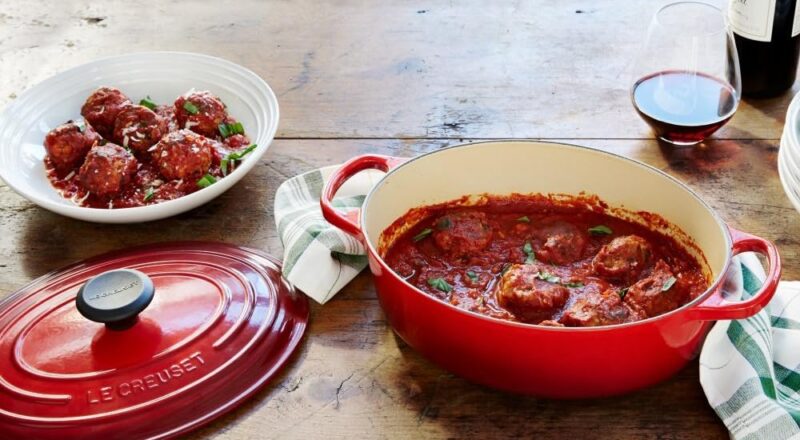When stepping into the world of braisers, a common dilemma arises: should you choose an enamel braiser or go for a raw cast iron braiser? This article is crafted to help you make an informed decision by exploring the unique attributes of each type. Whether you are a seasoned chef or a home cook, understanding the differences can elevate your culinary creations.

Understanding Braisers
The braiser is a versatile piece of cookware designed to handle various cooking methods, including braising, roasting, and even baking. It typically features a heavy lid, shallow design, and sturdy construction, making it an essential tool in any kitchen.
What is Enamel Cast Iron?
An enamel cast iron braiser is cast iron coated with a layer of enamel. This coating prevents rust, makes the cookware easier to clean, and offers a splash of color to your kitchen.
Benefits of Enamel Cast Iron
- Non-reactive surface suitable for acidic dishes
- Requires no seasoning
- Available in various colors and designs
Drawbacks of Enamel Cast Iron
- Can chip if handled roughly
- Usually more expensive than raw cast iron
What is Raw Cast Iron?
Raw cast iron braisers are made from pure cast iron without any coating. While they require seasoning, they are renowned for their durability and heat retention.
Benefits of Raw Cast Iron
- Exceptional heat distribution
- Develops a natural non-stick surface over time
- Highly durable and long-lasting
Drawbacks of Raw Cast Iron
- Requires regular seasoning
- Prone to rust if not properly maintained
Comparing Heat Retention and Distribution
Both enamel and raw cast iron braisers excel in heat retention, but there are subtle differences. Raw cast iron often holds heat longer, while enamel provides more even distribution, making it ideal for dishes that require precise temperature control.
Maintenance and Care
Enamel Cast Iron Maintenance
Cleaning an enamel braiser is straightforward. Most are dishwasher safe, but hand washing is recommended to preserve the enamel coating.
Raw Cast Iron Maintenance
Maintaining a raw cast iron braiser involves regular seasoning. This process creates a protective layer, enhancing its non-stick properties and preventing rust.
Cooking Versatility
Both types of braisers offer excellent versatility. However, the enamel braiser’s non-reactive surface makes it better for acidic ingredients, while raw cast iron excels in high-heat applications like searing and frying. Learn more about using a braiser for different cooking methods here.
Price Considerations
When it comes to cost, raw cast iron is generally more affordable. Enamel braisers are priced higher due to the added coating and aesthetic appeal.
Design and Aesthetic Appeal
Enamel braisers often come in a variety of colors, making them a stylish addition to any kitchen. In contrast, raw cast iron offers a classic, rustic look.
Durability and Longevity
Both types of braisers are built to last. However, the enamel coating can chip over time, whereas raw cast iron can last for generations with proper care. Learn more about their longevity in comparison to other cookware here.
Environmental Impact
Cast iron cookware is known for its sustainability. Raw cast iron has a smaller environmental footprint due to its longer life span and minimal processing.
Health Considerations
Cooking with cast iron can add a small amount of iron to your diet, which can be beneficial. However, the enamel coating prevents this interaction, which may be preferable for those monitoring their iron intake.
Conclusion: Which Braiser is Right for You?
Your choice between an enamel and raw cast iron braiser depends on your cooking style, maintenance preference, and aesthetic taste. For a deeper dive into braisers, check out this external guide.

FAQs
What is the main advantage of enamel braisers?
Enamel braisers offer easy maintenance and a non-reactive cooking surface, making them ideal for acidic dishes.
How often should I season my raw cast iron braiser?
Season your raw cast iron braiser regularly, especially after each use, to maintain its non-stick surface and prevent rust.
Can I use both enamel and raw cast iron braisers for all types of cooking?
Both are versatile, but the choice depends on the dish. Enamel is suited for precise cooking, while raw cast iron excels at high-heat applications. For more on using braisers, visit Epicurious.
This article contains affiliate links. We may earn a commission at no extra cost to you.

